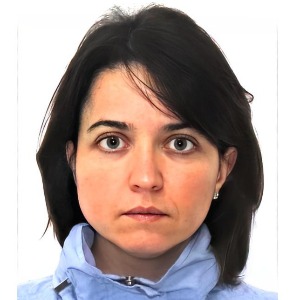Yazdan Mirzanejad, University of British Columbia, Canada
Anticytokine autoantibodies, particularly anti-IFN-γ autoantibodies (AAbs), disrupt cytokine functions, leading to infections, autoimmune-like diseases, and conditions resembling IL-12/IFN-γ pathway defects. Advances in genetic testing have clarified overlaps between [....] » Read More













































































































Title : 2000 years of pandemics: Past, present and future
Claudia Ferreira, Sorbonne University, France
A pandemic is considered as an outbreak of a disease occurring over a wide geographic area, crossing national borders, and affecting a high proportion of the world. During the 1st millennium AD, three main pandemics emerged. The Antonine Plague (165-190 AD), caused by hemorrhagic [....] » Read More
Title : Role of mast cells in infection and inflammation
Pio Conti, University in Chieti, Italy
Mast cells (MCs) originate from CD34+/CD117+/CD13+ pluripotent hematopoietic stem cells and they express the c-Kit receptor (c-Kit-R) which regulates their proliferation and sustains their survival, differentiation, and maturation. MCs are immune tissue cells derived from bone ma [....] » Read More
Title : Tubercular disease in children: Optimizing treatment strategies through disease insights
Elena Chiappini, University of Florence, Italy
Background: Paediatric tuberculosis (TB) represents a critical health concern due to the significant risk of extrapulmonary TB (EPTB), severe disease forms, and the increasing prevalence of drug-resistant strains (DR-TB). Understanding the clinical characteristics of affected chi [....] » Read More
Title : Rickettsial disease serodiagnosis – Current trends
Lee Fuller, VMRD, Inc, United States
Background: Clinical Rickettsial diseases are found worldwide, yet these agents are not amenable to in vitro propagation outside of proper BSL2 facilities. Diagnosis has utilized both PCR and antibody detection, with serology products currently available for automated (ELISA), ma [....] » Read More
Title : Cognitive behavioral sequelae of non-severe malaria and potential strategies for its mitigation
Cláudio Tadeu Daniel-Ribeiro, Instituto Oswaldo Cruz, Brazil
Human and experimental malaria (EM) are associated with neurocognitive sequelae (NCS), especially in the most severe form of the disease; cerebral malaria (CM). NCS, related to learning and memory, are also observed in human non-severe malaria (nSM), mainly in children and the el [....] » Read More
Title : Antibiotic profile in a second level hospital, in Tepic Nayarit Mexico 2023
Jose Agustin Carrillo Rodriguez, Mexican Social Security Institute, Mexico
In Latin America, antimicrobial resistance is an urgent public health priority. Currently, the indiscriminate use of antibiotics is associated with increased costs in care and the emergence of multi-resistant germs. There are few studies that evaluate the impact of antibiotic use [....] » Read More
Title : Effect of glutathione on antibiotic susceptibility and resistance in bacteria
Dong H Kwon, Long Island University, United States
Infections with antibiotic resistance are associated with millions of deaths annually and are a significant healthcare challenge. A new antibiotic or strategy is an urgent priority to reduce antibiotic resistance. Glutathione (GSH) is a biogenic thiol compound for an optimal intr [....] » Read More
Title : FawCells, The universal alternative for antibiotics
Fawzy Abdelatty, Heidelberger Center for Cellular Therapy, Germany
FawCells are Methylation Induced Pluripotent Cells which are prepared from peripheral blood samples. For patients, these samples can be obtained from autologous, heterologous or xenographic sources. These cells are very potent in infection prevention and control. They have the po [....] » Read More
Title : Characterization of virologic-immunologic failure and discordance among new HIV-infected adults in the Upper Southern Region of Thailand
Siwimol Phoomniyom, The Office of Disease Prevention and Control Region 11, Thailand
Virologic-immunologic failure and virologic-immunologic discordance are vital for predicting clinical outcomes. In HIV-infected people, the CD4+ T lymphocyte count (CD4) and HIV viral load were used to track and assess the treatment response of antiretroviral therapy (ART). The o [....] » Read More
Title : Disseminated fusariosis - Management conundrum - A fatal case in an immunocompromised patient
Mariam Abu Jubain, University Hospitals of Leicester NHS Foundation Trust, United Kingdom
Disseminated fusariosis is a rare but often fatal opportunistic fungal infection that predominantly affects immunocompromised individuals with a mortality rate of over 80%. Prognosis is determined by the degree of immunosuppression and extent of infection. A 55-year-old caucas [....] » Read More
Title : First application of CUT&Tag in bacteria reveals unconventional G-quadruplex landscape in mycobacterium tuberculosis: A novel defense mechanism against oxidative stress
Emanuela Ruggiero, University of Padova, Italy
Mycobacterium tuberculosis (Mtb), the causative agent of tuberculosis, remains a global health threat due to increasing drug resistance and high mortality rates. To combat tuberculosis effectively, novel therapeutic targets are urgently needed. G-quadruplexes (G4s) represent prom [....] » Read More
Title : Novel antibiotic adjuvant exerts potent antimicrobial activity against MRSA and synergistically restores colistin activity in MDRO
Susu Zughaier, Qatar University, Qatar
Background: The rise in global burden of antimicrobial resistance (AMR) critically threatens human health. Multidrug resistant organisms (MDROs) are causing healthcare and community-acquired infections. In 2019, AMR of pathogens such as Escherichia coli (E .coli) and Staphylococc [....] » Read More
Title : Universal PCR assays to detect Candida FKS and ERG11 mutations
Cheung Yuk Yam, Hong Kong Metropolitan University, Hong Kong
The emergence of antifungal resistance in Candida species presents significant challenges in managing infections, particularly among immunocompromised patients. This study aimed to develop rapid molecular assays for detecting mutations in the FKS genes across four clinically sign [....] » Read More
Title : CRISPR-Cas-powered pen-side diagnostic tests for the early detection of the tick-borne pathogens Theileria parva, Anaplasma marginale and Babesia bigemina
Nicholas Svitek, International Livestock Research Institute, Kenya
The apicomplexan parasite Theileria parva causes East Coast fever (ECF), one of the most important and lethal tick-borne diseases of cattle in sub-Saharan Africa, resulting in annual losses exceeding US $300 million to the livestock industry. ECF diagnosis primarily relies on cli [....] » Read More
Title : Risk of visceral leishmaniasis resurgence in India: A compartmental modelling study
Ashvini Gupta, Indian Institute of Technology Bombay, India
Visceral leishmaniasis (VL) is a neglected tropical disease (NTD) caused by the parasite Leishmania donovani and transmitted by sandflies. In India, the elimination target for VL is defined as less than 1 case per 10,000 population per year at the block level. As the country appr [....] » Read More
Title : Microbiological activity of bovhyaluronidaze azoximer against microbial biofilms
Roman Kozlov, Smolenks State Medical University, Russian Federation
Background. Biofilm-related infections are most often characterized by low susceptibility to treatment due to the difficulty of antibiotics penetration into the biofilm. This fact repeatedly increases the level of antimicrobial resistance (AMR). In turn, the spread of AMR signifi [....] » Read More
Title : Identification of airborne fungus in residential environments that contribute to allergic bronchopulmonary asthma: Case report
Haydee Torres Guerrero, Universidad Nacional Autonoma de Mexico, Mexico
Allergic bronchopulmonary mycosis (ABPM) is a pulmonary hypersensitivity disease to various fungi. The most common causative Aspergillus fumigatus, however, there are other saprophyte fungi that have been identified that cause ABPM such as Candida albicans, Bipolaris spp , Schyso [....] » Read More
Title : Effect of an immunomodulator rs100 in vaccinated, unvaccinated and challenged with Mycoplasma Hyopneumoniae
Susana Mendoza, National Autonomous University of Mexico, Mexico
Enzootic pneumonia is a disesease caused by M.hyopneumoniae (Mh).The immunomodulator RS-100 we used in this study is of vegetable origin. Clinical, serologic and leuko parameters in piglets treated with the RS100 and challenged with Mh. For 15 days no clinical signs were observed [....] » Read More
Title : Reversal of metabolic reprogramming as a therapeutic strategy in early sepsis
Eun Jung Choi, Daegu Catholic University, Korea, Republic of
Sepsis is a critical condition characterized by dysregulated inflammation. In the early phase, innate immune cells undergo a metabolic shift from mitochondrial oxidative phosphorylation to glycolysis, fueling excessive cytokine production. To explore this phenomenon, we analyzed [....] » Read More
Title : Enhancing antibiotic therapy for SSTIs: The diagnostic role of punch biopsy
Victoria de Lima Burnier, Pontifícia Universidade Católica de Campinas, Brazil
Introduction: Skin and soft tissue infections (SSTIs) include a range of conditions affecting the skin layers and underlying connective tissue, including erysipelas, cellulitis, impetigo, and ecthyma. These infections are among the most common reasons for outpatient visits and ho [....] » Read More
Title : Mitigate cross-contamination hazards by sorting samples within a closed cartridge
Chengjun Jin, Miltenyi Biotec B.V. & Co. KG, Germany
Background: The isolation of pathogens and immune cells from hazardous samples is essential for immunological and infectious disease research. However, traditional droplet-based cell sorters pose risks of aerosol formation, exposure to infectious materials, and cross-contaminatio [....] » Read More
Title : Antimicrobial resistance in pathogens isolated from raw milk and fresh goat cheese
Laura Hernandez Andrade, National Institute of Forestry Agricultura and Livestock (INIFAP), Mexico
The objective was to identify potentially pathogenic microorganisms, as well as their susceptibility to antimicrobials, from samples of milk and cheese produced on family farms in the northern, central and southern regions of Mexico. Two farm units from the state of Durango, two [....] » Read More
Title : Illness severity in patients with Severe Fever with Thrombocytopenia Syndrome (SFTS) assessed by Multiple Organ Dysfunction Score (MODS): A guide for physicians in monitoring and treatment decisions
Jeong Rae Yoo, Jeju National University Hospital, Korea, Republic of
Background: Severe Fever with Thrombocytopenia Syndrome (SFTS) is a viral tick-borne disease with high mortality rates, particularly in East Asia. Despite advances in understanding its pathophysiology, effective treatment strategies remain limited. The Multiple Organ Dysfunction [....] » Read More
Title : Cytokine storm control in severe fever with thrombocytopenia syndrome: Tocilizumab’s potential role in reducing IL-6 and mortality
Wooseong Jeong, Jeju National University Hospital, Korea, Republic of
Background: Severe fever with thrombocytopenia syndrome (SFTS) is a zoonotic infectious disease prevalent in East Asia, with a mortality rate of 5–30%. Despite trials with therapeutic plasma exchange (TPE) and antiviral treatments, no established treatment strategy exists f [....] » Read More
Title : Association between obesity and dengue severity in a tertiary pediatric hospital in the Philippines
Kimberly May Perez Borja, Philippine Pediatric Society, Philippines
Dengue infection is currently one of the most important mosquito-borne viral diseases in the tropical parts of the world (WHO, 1999).1 When it comes to viral infections like Dengue Fever, nutritional status is a key factor to immune functions since it has an influence on genomics [....] » Read More
Title : Invasive fungal sinusitis, correlation of the radiological and intraoperative findings
Nikrish S Hegde, Indian Radiological and Imaging Association, India
Acute invasive fungal sinusitis though uncommonly encountered, is a life threatening condition with a high mortality rate. It progresses rapidly from the time of diagnosis and may result in death in a short span of time if left untreated. Here we present the MRI / CT imaging find [....] » Read More
Title : Study on surface disinfection of 254 nm pulsed ultraviolet laser
Jiancheng Qi, Systems Engineering Institute, Academy of Military Science of the Chinese People’s Liberation Army, China
Objective: With the rapid development of laser application technology in recent years, it is possible to carry out rapid and environmentally friendly disinfection by using laser to generate pulsed ultraviolet radiation in specific bands. The germicidal efficacy of continuous ultr [....] » Read More
Title : Study on surface disinfection of 254 nm pulsed ultraviolet laser
Zongxing Zhang, Systems Engineering Institute, Academy of Military Science of the Chinese People’s Liberation Army, China
Objective: With the rapid development of laser application technology in recent years, it is possible to carry out rapid and environmentally friendly disinfection by using laser to generate pulsed ultraviolet radiation in specific bands. The germicidal efficacy of continuous ultr [....] » Read More
Title : Use of antifungal agents in non-neutropenic critically ill patients to decrease invasive fungal infections versus placebo: A systematic review and meta-analysis
Siham Mahgoub, Howard University College of Medicine, United States
Background: Invasive candidiasis is considered the third most common bloodstream infection in critical care units, and can lead to increased morbidity and mortality. Invasive fungal infections can be deadly if not recognized early in the course of the disease. Reaching a diagnosi [....] » Read More
Title : Monitoring the characteristics of A/H1N1 influenza viruses circulating in post-2009 pandemic flu seasons in Romania
Alina Elena Ivanciuc, INCDMM Cantacuzino, Romania
Background: In April 2009, Centers for Disease Control and Prevention (United States) identified a swine-origin influenza virus (H1N1) in human infection cases from Mexico. The new virus was genetically different from the seasonal one and spread rapidly into the human population [....] » Read More